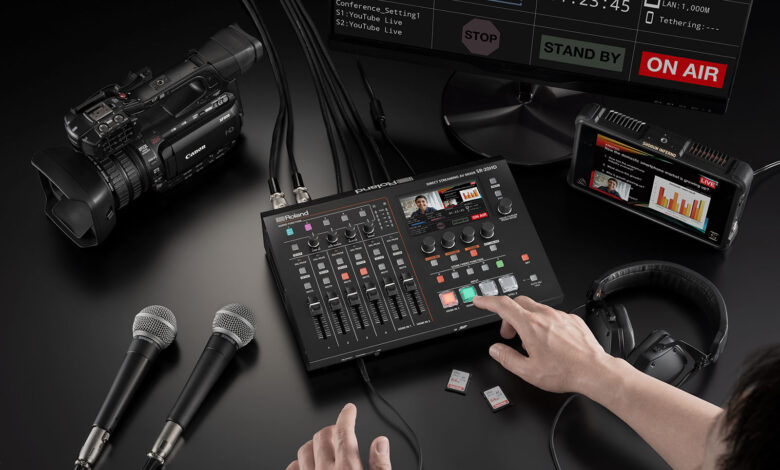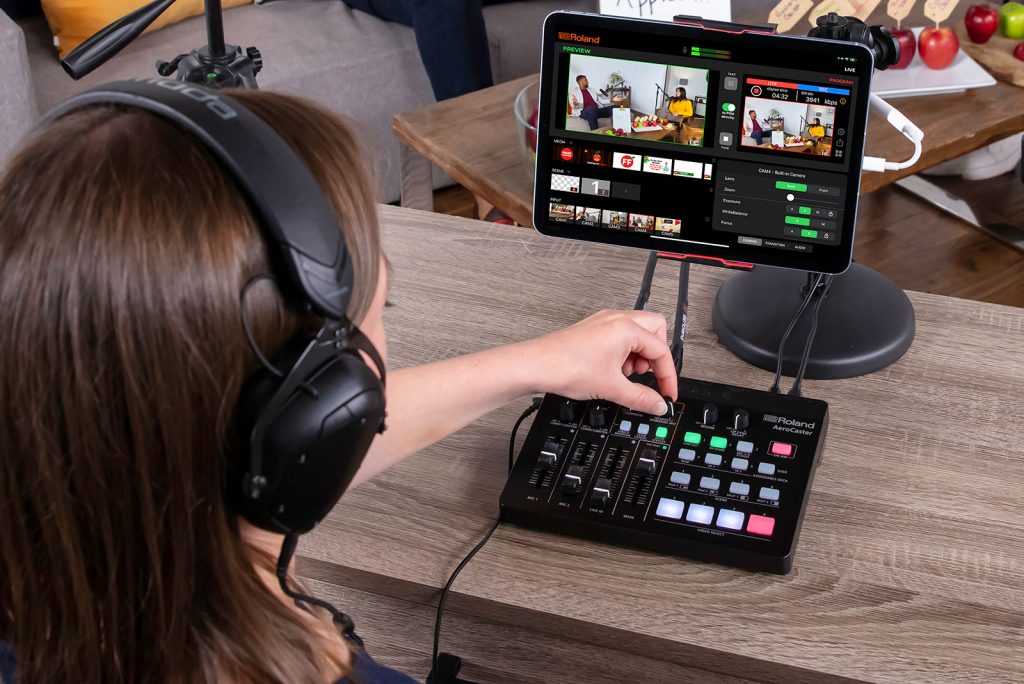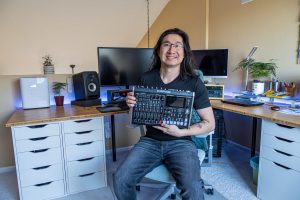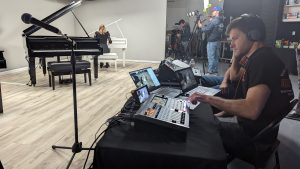- Video and audio production are valuable skills in today’s digital landscape.
- Studies have recognized the potential of audio and video production to help at-risk students.
- Thanks to advances made in video production technology in recent years, a broadcast studio is now feasible on any school’s budget.
Video and audio production are valuable skills in today’s digital landscape. Familiarity with broadcasting equipment and production can be an asset in the workforce. To meet these needs, many schools are considering installing a broadcast studio. Video and audio production engage students, facilitating practical, hands-on learning. Industry expert David Barnard, Managing Director of Gencom Technology, offers advice on setting up a studio on a school budget.
Broadcast Benefits
For years, studies have recognized the potential of audio and video production to help at-risk students. Video production connects school to the real world for learners of all ages and abilities. Students can learn essential creative thinking skills through audio and visual work. In addition, the production process boosts awareness of media consumption, improving media literacy. Schools can also create a shared culture by producing video yearbooks, sports tapes, documentaries, and podcasts.
The heart of the studio is a mixer that allows students to switch between multiple cameras and other video sources, add transitions between shots, and overlay graphics.
David Barnard
Setup Hints
To Barnard, there are key considerations when creating an academic broadcast environment. “The number one mistake is not providing a dedicated space,” he explains. “Having a studio which is acoustically treated to be quiet and non-reverberant makes a huge difference in producing high-quality content.”
He stresses the importance of a dedicated area for the studio. “Classrooms have many distractions, and keeping kids focused on the project can be challenging,” Barnard says. “Plus, having a separate area allows students to focus on the production.”
Expert Assistance
Professional help can supercharge results, particularly in a field heavy with technical details. “Getting an A/V specialist involved early in the project is also important. A/V production has specific requirements for acoustics, lighting, power, and network,” he notes. “It’s a lot easier and less expensive to make the right choices at the outset than fixing things designed and built incorrectly.”
So what equipment does a school need to get started? “The heart of the studio is a mixer which allows students to switch between multiple cameras and other video sources (such as a PC), add transitions between shots, and overlay graphics.”

A New A/V Era
Gear availability makes the implementation process more accessible than ever. “Once upon a time, technology like this was costly and difficult to use,” Barnard confirms. “But in recent years, there has been a strong focus on simplifying the user experience and bringing down the cost so technology is accessible to students, hobbyists, and other non-professional users looking to incorporate live video into their communications strategy.”
Many systems like the Roland VR-6HD, and SR-20HD integrate video switching, audio mixing, and streaming capabilities to provide a complete solution in one box. Other products like the Roland AeroCaster take this further, enabling show production on an iPad, using mobile phones as the cameras. Overall, in a general education environment, the most important considerations are teaching students to think about workflow and how they’re crafting their message.
“This can be done with consumer-grade video cameras, a simple 3-point lighting setup, and a few inexpensive podcasting microphones,” Barnard confirms. “However, if you’re producing live content, such as a performance, a student news bulletin, an interview, or a podcast, you need to pay attention to how it all comes together.”
If you’re producing live content, such as a performance, a student news bulletin, an interview, or a podcast, you need to pay attention to how it all comes together.
David Barnard

Getting Started
Barnard acknowledges that a slew of questions accompanies a studio installation. Does the school have standalone audio and visual mixers, or does it use a combined A/V mixer? How does the school intend to create and overlay graphics? Will the content be for livestreaming or later distribution?
Plus, are also logistics and the realities of young users. “Students can be rough on equipment, so you need tools to withstand heavy treatment,” he says. “My best advice is to list essential requirements. How many students will be involved? How will their productions get distributed? Are we using video, and if so, how many cameras do we want? Two or three cameras, plus a PC for graphics, PowerPoint, playback of pre-recorded material or video games, is usually a good start.”
He also recommends coming up with a budget for the project. “There are solutions for any size budget, from under $1000 to tens of thousands of dollars. From there, talk to someone who can translate those requirements into a system design.”
Media literacy should be an essential part of a school curriculum at any level. Students should be able to learn to craft professional content.
David Barnard
Teaching Responsibility
The benefits of a broadcast studio in a school curriculum are vast. “Kids today are all broadcasters, whether they know it or not. Thanks to social media, everyone has a public image and a platform to say what’s on their mind,” he explains. “The right message can go viral without warning and significantly impact the person creating the message and their community.”
Ultimately, Barnard feels that broadcasting will help students understand their responsibility as content creators. “Media literacy should be an essential part of a school curriculum at any level. Students should be able to learn to craft professional content.” Thanks to advances made in video production technology in recent years, this is now feasible on any school’s budget.
Original article appears in SchoolNews New Zealand




